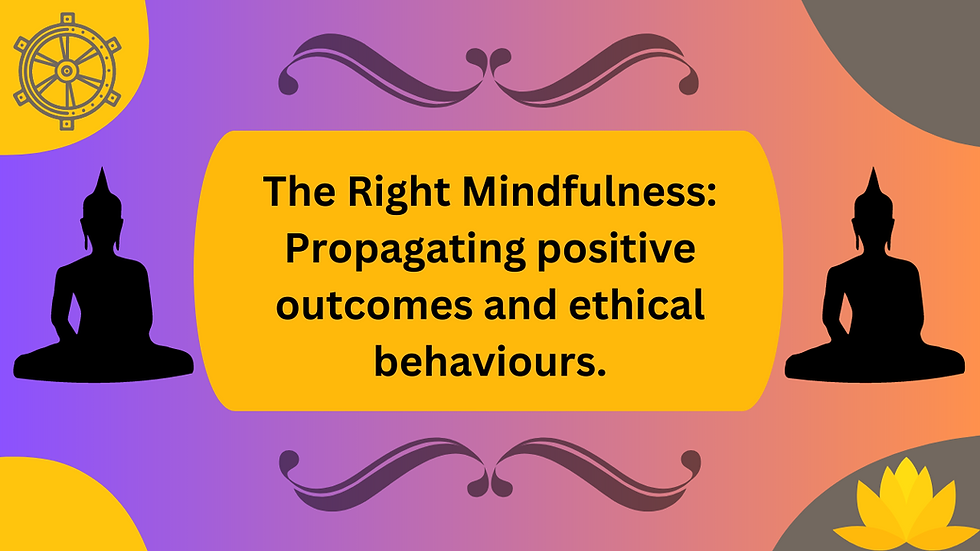The Right Mindfulness: Propagating positive outcomes and ethical behaviours.
- Htay Aung
- Jun 6, 2023
- 2 min read

The Right Mindfulness is eighth the component of the Eightfold Path, a central teaching in Buddhism. It is an essential practice that cultivates a deep and non-judgmental awareness of the present moment. Through the practice of Right Mindfulness, individuals develop the ability to observe their thoughts, emotions, bodily sensations, and the surrounding environment with clarity and equanimity.
The concept of Right Mindfulness is rooted in the understanding that much of our suffering arises from being lost in the past or future, rather than fully engaging with the present moment. By bringing attention to the present, we become more attuned to the reality of our experiences and can respond to them with wisdom and compassion.
Attention to the Body: This aspect involves bringing focused attention to the physical sensations and movements of the body. It includes observing the breath, bodily postures, and sensations without judgment or attachment. By grounding ourselves in the body, we develop a foundation of stability and presence.
Awareness of Feelings and Emotions: This aspect involves recognizing and acknowledging the arising and passing of feelings and emotions, whether pleasant, unpleasant, or neutral. By observing these mental states without clinging or aversion, we develop a deep understanding of their impermanent nature and avoid becoming entangled in them.
Observation of Thoughts and Mental States: This aspect involves observing the activities of the mind, including thoughts, mental images, and perceptions. It entails cultivating a non-identifying awareness of the mind's contents and recognizing the transient and conditioned nature of thoughts. By observing thoughts without getting caught up in them, we develop a greater sense of clarity and freedom.
Through the practice of Right Mindfulness, individuals cultivate an attitude of non-reactivity and non-attachment. They become aware of the interplay between their thoughts, emotions, bodily sensations, and external circumstances, which leads to a deeper understanding of the nature of reality and the interconnectedness of all phenomena.
The Right Mindfulness is not merely a passive observation; it is an active engagement with the present moment. It empowers individuals to respond skillfully to the challenges of life, making choices that are aligned with wisdom and compassion. By developing this practice, individuals can cultivate a sense of inner peace, reduce suffering, and transform their relationship with themselves and the world around them.
Editor Htay Aung (Theo)
.png)




Comments